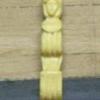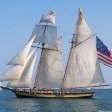MORE HANDBOOKS ARE ON THEIR WAY! We will let you know when they get here.
×
-
Posts
1,735 -
Joined
-
Last visited
Reputation Activity
-
 flying_dutchman2 reacted to Jack Panzeca in Oseberg Viking Ship by Jack P - FINISHED - Billing Boats - 1/25 Scale - 9th Century - (Modified)
flying_dutchman2 reacted to Jack Panzeca in Oseberg Viking Ship by Jack P - FINISHED - Billing Boats - 1/25 Scale - 9th Century - (Modified)
I am back from a business trip (I know, I am supposed t be retired) and I stopped in Sedona Arizona for a few days to enjoy my other hobby, photography.
The bad news is that I fell off a rock and damaged my camera and myself. It is amazing how debilitating a disabled little finger is. It is improving rapidly so hopefully I can get back to my build in a few days. I am happy to be back and catching up on the true works of art underway on this wonderful forum.
-
 flying_dutchman2 reacted to Jack Panzeca in Oseberg Viking Ship by Jack P - FINISHED - Billing Boats - 1/25 Scale - 9th Century - (Modified)
flying_dutchman2 reacted to Jack Panzeca in Oseberg Viking Ship by Jack P - FINISHED - Billing Boats - 1/25 Scale - 9th Century - (Modified)
I had to cut back the planks in the curve to allow the scrollwork to fit. Better that than reduce the size of the scroll which is the most important visual detail.
Von_Kossa and I both ran into the same problem with the top two planks that form a vertical band. If you follow the bulkheads those planks lift to the center. They are also a little fat on the ends. They must be dragged down to get them level which leaves a fair amount of bulkhead to be cut off. The bulkheads are also cut with the profile for those two planks too deep. It takes a lot of sanding to cut them back far enough that the planks lay against each other. It is still a little high (I missed it) which I will have to cut back. I am holding off on the scroll pieces on the inside of the stem and stern to avoid damage as I work.
This sure is fun!
-
 flying_dutchman2 reacted to Jack Panzeca in Oseberg Viking Ship by Jack P - FINISHED - Billing Boats - 1/25 Scale - 9th Century - (Modified)
flying_dutchman2 reacted to Jack Panzeca in Oseberg Viking Ship by Jack P - FINISHED - Billing Boats - 1/25 Scale - 9th Century - (Modified)
Please let me know if this is what you are looking for.
One problem I had was keeping the glue off of the outside surface where the planks overlapped. I applied the glue with a toothpick but when I clamped the planks out came the glue. I wiped it off immediately but I am still left with some sanding.
-
 flying_dutchman2 reacted to Jack Panzeca in Oseberg Viking Ship by Jack P - FINISHED - Billing Boats - 1/25 Scale - 9th Century - (Modified)
flying_dutchman2 reacted to Jack Panzeca in Oseberg Viking Ship by Jack P - FINISHED - Billing Boats - 1/25 Scale - 9th Century - (Modified)
I finished the lower part of the hull but had a little false start. On my first plank of the day I got the distance between the overlap of two planks about 2 mm too close and I did not notice until 3 planks later. I have always used water to loosen PVA glue but I heard alcohol mentioned on MSW and it sure works faster than water. Thanks for the tip.
I sure do like the lines of this ship. The Vikings must have been a tough bunch-crossing the ocean in an open boat.
-
 flying_dutchman2 reacted to Jack Panzeca in Oseberg Viking Ship by Jack P - FINISHED - Billing Boats - 1/25 Scale - 9th Century - (Modified)
flying_dutchman2 reacted to Jack Panzeca in Oseberg Viking Ship by Jack P - FINISHED - Billing Boats - 1/25 Scale - 9th Century - (Modified)
I got a start at the planking. It is 1mm laser cut plywood and bends easily. Each plank is overlapped about 1 mm and needs a little adjustment to get it just right at both ends. I did a little coarse sanding but it has a long way to go.
-
 flying_dutchman2 reacted to Jack Panzeca in Oseberg Viking Ship by Jack P - FINISHED - Billing Boats - 1/25 Scale - 9th Century - (Modified)
flying_dutchman2 reacted to Jack Panzeca in Oseberg Viking Ship by Jack P - FINISHED - Billing Boats - 1/25 Scale - 9th Century - (Modified)
Greetings Everyone,
This is my first build log and I missed the ritual box opening. I was already putting things together before I realized I should have photographed it first. The plans and directions are pretty sparse but it is a fairly straight forward ship. The keel had a slight bow in it but I used a little warm water and bent it a little past straight and it dried nice and flat. This is the kit version with the plywood scrollwork and shields. The keel and bulk heads leave a lot of exposed plywood edges and my plan is to cover them with oak veneer. The deck planking is Obechi which is soft, brittle and in my eye a little ugly. I have already ripped a few oak planks and they should work fine.
I am happy to be here and doing this. More soon.
-
 flying_dutchman2 reacted to bobcat in review sloop of war
flying_dutchman2 reacted to bobcat in review sloop of war
Hello,
The review for today is:
THE SLOOP OF WAR 1650-1763
Ian McLaughlan
2014 Naval Academy Press, Seaforth Publishing, 288 pages 12”x10”.
I was more than pleasantly surprised when I received this book to review. This large book is an extremely well researched and documented tracing of the development of the sloop of war. Mr. McLaughlan has carefully opened the door to the research of this class that, by the end of the Napoleonic wars became the most numerous of all the classes of ships involved in that conflict.
McLaughlan starts his story by diving into the murky beginnings of sloops by looking at shallops and oared whaling craft and how they were adapted to the military needs of wartime in the 1650’s. That period led to the development of lots of sizes and rigs of small craft. This development grew along several needs until the 1704-17 period. During this time the advice or scout boat, brigantine, escort, bomb ketch and fire ship became consolidated into a basic sloop design.
By 1732 some degree of standardization was established with the snow rig most favored. Only a few ships of that time used the ketch rig. The 1740’s saw the development of the ship rig and the raised quarterdeck and by the end of this book’s coverage the raised deck, ship rigged sloop as characterized by the Swan class of ships had become a staple in the Royal Navy’s fleet.
There are some notable features in this book that need highlighting. The author starts with a detailed and well-illustrated chapter on rigs and rigging. This gives the reader a reference to all of the types of rigs to be encountered in the book. Also, two chapters are devoted to the concurrent developments in French design, leading to the classic corvette design used by the French navy and privateers.
This book is heavily illustrated with photos, drawings and plans from the National Maritime Museum in Greenwich. Of particular interest to modelers is that all of the NMM plans are identified by their file numbers which will make ordering from them easier.
Two appendixes are also important to note for modelers. The first one gives mast and spar dimensions while the second serves as a primer on how to read the plans the plans of some of the ships in the book.
I have two wishes concerning this book. I hope that other researchers use this benchmark book as platform to add to, prove or disprove any of Mr. McLaughlon’s pioneering work. My second wish is that the author gives us volume two that will take us through 1815.He will need collaborators to help with American and French sloop building efforts and I hope that he will be able to find that help. Finally, I hope to see some modelers build some examples from the wonderful collection of interesting subjects.
By now you can tell that I like this book. It is a must have for anyone interested in the smaller warships of the 17th and 18th centuries.
Bob Friedman
-
 flying_dutchman2 reacted to Decoyman in HMS Isis and Model Engineer no. 4487
flying_dutchman2 reacted to Decoyman in HMS Isis and Model Engineer no. 4487
In case anyone is interested Model Engineer is starting a series of articles by Patrick Puttock about his model of the 50-gun ship HMS Isis. The first instalment is now out.
Patrick's model won a gold medal at last year's Model Engineer Exhibition as well as The Earl Mountbatten of Burma Trophy.
Rob
-
 flying_dutchman2 reacted to algeciras1801 in Naval History On This Day, Any Nation
flying_dutchman2 reacted to algeciras1801 in Naval History On This Day, Any Nation
12 July 1801 Second Battle of Algeciras.
A British squadron commanded by Rear-Admiral James Saumarez defeats a combined French and Spanish squadron commanded by Contre Admiral Charles Linois in a night action off Gibraltar. Two Spanish first rates are destroyed and ship of the line is captured. The victory effectively ends the alliance between France and Spain which in turn results in the signing of the Treaty of Amiens between Britain and France, a treaty which ends the French Revolutionary Wars
-
 flying_dutchman2 reacted to algeciras1801 in Naval History On This Day, Any Nation
flying_dutchman2 reacted to algeciras1801 in Naval History On This Day, Any Nation
22 July 1805 Finisterre (Calder's Action)
Vice-Admiral Calder's squadron of fifteen ships of the line, stationed off Ferrol in northern Spain, intercepts the squadron of Admiral Villeneuve as it returns to European waters from the Caribbean. Heavy fog and light winds delay the action until the evening and the confused, indecisive, encounter ends with Calder badly disabling four ships of the French fleet and capturing another two. The weather improves the following day but Calder, an experienced officer who had been Sir John Jervis’s flag-captain at the Battle of St Vincent, seems more intent on protecting his prizes and chooses not to re-engage. The result of this decision is an eventual court martial which ends his career.
-
 flying_dutchman2 reacted to Kevin in Naval History On This Day, Any Nation
flying_dutchman2 reacted to Kevin in Naval History On This Day, Any Nation
The construction of HMS Victory begins
JUL 23rd, 1759 - Richard Cavendish recounts the birth of a great warship The keel of the most famous ship in the history of the Royal Navy was laid down in the Old Single Dock (now the Victory Dock) at Chatham Dockyard in Kent. Present with Admiralty officials at the occasion was William Pitt the Elder, whose government had announced a major ship-building programme of first-rate ships of the line and frigates the year before.
The new first-rate was designed by the Surveyor of the Navy, Sir Thomas Slade. Her keel was to be 259 ft long, she would have a displacement of 2,162 tons, carry a crew of about 850 and be armed with more than 100 guns. Some 6,000 trees would be used to build her, the great bulk of which were oaks, mainly from Kent, the New Forest and Germany. She was the Navy’s sixth Victory. One of them, under Sir John Hawkins, had fought the Spanish Armada in 1588. Another, of 80 guns, had been launched in 1666 and the fifth, launched in 1737, had sunk with all hands in 1744.
-
 flying_dutchman2 reacted to jud in Naval History On This Day, Any Nation
flying_dutchman2 reacted to jud in Naval History On This Day, Any Nation
Off the coast of Cherbourg, France, the Confederate raider CSS Alabama loses a ship-to-ship duel with the USS Kearsarge and sinks to the floor of the Atlantic. 19 June 1864.
-
 flying_dutchman2 got a reaction from Michiel in Prins Willem 1650 by Michiel - 1:50 - POB Zeeland ship from own plans
flying_dutchman2 got a reaction from Michiel in Prins Willem 1650 by Michiel - 1:50 - POB Zeeland ship from own plans
WOW, that is beautiful. Excellent workmanship.
Marc
-
 flying_dutchman2 reacted to Michiel in Prins Willem 1650 by Michiel - 1:50 - POB Zeeland ship from own plans
flying_dutchman2 reacted to Michiel in Prins Willem 1650 by Michiel - 1:50 - POB Zeeland ship from own plans
Here's the finale version:
For those interested here:
http://www.modelships-beagle.eu/smf/index.php/topic,960.msg56442.html#msg56442
is a full track of the carving
Have fun,
-
 flying_dutchman2 reacted to mike in 18th Century Longboat by mike - FINISHED - Model Shipways
flying_dutchman2 reacted to mike in 18th Century Longboat by mike - FINISHED - Model Shipways
Thanks Chuck and David. Now that the longboat is finished I can get back to my FLY
-
 flying_dutchman2 got a reaction from MEDDO in The Sailing Frigate (A History In Ship Models) Robert Gardiner
flying_dutchman2 got a reaction from MEDDO in The Sailing Frigate (A History In Ship Models) Robert Gardiner
I have this book as well and it is excellent. Well written, great pictures and detailed.
Marc
-
 flying_dutchman2 reacted to pompey2 in Naval History On This Day, Any Nation
flying_dutchman2 reacted to pompey2 in Naval History On This Day, Any Nation
June 17th 1940 sinking of HMT Lancastria - St Nazaire.
The largest ever loss of life on a single British ship sinking.
Jammed with people / soldiers escaping Europe two weeks after Dunkirk.
Estimates between 4,000 on 9,000 people on board, just 2,477 survivors, one of which was my Grandad.
Official capacity 2,200
Hit by three bombs as it tried to clear the coast, sunk in twenty minutes.
A horrible story if you read it in detail.
N
-
 flying_dutchman2 got a reaction from mtaylor in Naval History On This Day, Any Nation
flying_dutchman2 got a reaction from mtaylor in Naval History On This Day, Any Nation
I picked up a book at gutenberg.org about the "History of Holland. Very interesting, very detailed and information I have never read before.
The following naval officer is famous of capturing four fleeing galleons trapped on the Cuban coast. Hein captured 11,509,524 guilders of booty in gold, silver, and other expensive trade goods, such as indigo and cochineal, without any bloodshed. The capture of the treasure fleet was the company's greatest victory in the Caribbean.
Pieter Pietersen Heyn (Hein) (25 November 1577 – 18 June 1629) was a Dutch naval officer and folk hero during the Eighty Years' War between the United Provinces and Spain.
Early life
Hein was born in Delfshaven (now part of Rotterdam), the son of a sea captain, and he became a sailor while he was still a teenager. In his twenties, he was captured by the Spanish, and served as a galley slave for about four years, probably between 1598 and 1602, when he was traded for Spanish prisoners. Between 1603 and 1607 he was again held captive by the Spanish, when captured near Cuba.
In 1607, he joined the Dutch East India Company and left for Asia, returning with the rank of captain (of the Hollandia) five years later. In 1618, when he was captain of the Neptunus, both he and his ship were pressed into service by Venice. In 1621 he left his vessel behind and traveled overland to the Netherlands.
In 1623, he became vice-admiral of the new Dutch West India Company (WIC) and sailed to the West Indies the following year. In Brazil, he briefly captured the Portuguese settlement of Salvador, personally leading the assault on the sea fortress of that town. In August with a small and undermanned fleet he sailed for the African west coast and attacked a Portuguese fleet in the strongly defended bay of Luanda but failed to capture any ships. He then crossed the Atlantic ocean again to try and capture merchant ships at the city of Vitória, but was defeated by a resistance organized by the local citizenry with the assistance of the Portuguese garrison. After finding that Salvador had been recaptured by a large Spanish-Portuguese fleet Hein returned home. The Dutch West India Company, pleased with Hein's leadership qualities, placed him in command of a new squadron in 1626. In subsequent raids during 1627 at Salvador, he attacked and captured over thirty richly laden Portuguese merchant ships before returning to the United Provinces.
Modern historians today often classify Hein as a pirate, though he was more properly a privateer; the Dutch Republic was locked in mortal combat with the Habsburgs and Hein was among the most successful and famous commanders it employed during the Eighty Years' War. While many privateers behaved no better than common pirates, Hein was a strict disciplinarian who discouraged unruly conduct among his crews and had rather enlightened views for the times about "Indian" tribes, slaves and members of other religions. Also, he never was an individual privateer but rather commanded entire fleets of warships.
Spanish treasure fleet
Battle in the Bay of Matanzas
In 1628, Admiral Hein, with Witte de With as his flag captain, sailed out to capture a Spanish treasure fleet loaded with silver from their American colonies and the Philippines. With him was Admiral Hendrick Lonck and he was later joined by a squadron of Vice-Admiral Joost Banckert, as well as by the pirate Moses Cohen Henriques. Part of the Spanish fleet in Venezuela had been warned because a Dutch cabin boy had lost his way on Blanquilla and was captured, betraying the plan, but the other half from Mexico continued its voyage, unaware of the threat. Sixteen Spanish ships were intercepted; one galleon was taken after a surprise encounter during the night, nine smaller merchants were talked into a surrender; two small ships were taken at sea fleeing, four fleeing galleons were trapped on the Cuban coast in the Bay of Matanzas.
After some musket volleys from Dutch sloops the crews of the galleons also surrendered and Hein captured 11,509,524 guilders of booty in gold, silver, and other expensive trade goods, such as indigo and cochineal, without any bloodshed. The Dutch didn't take prisoners: they gave the Spanish crews ample supplies for a march to Havana. The released were surprised to hear the admiral personally giving them directions in fluent Spanish; Hein after all was well acquainted with the region as he had been confined to it during his internment after 1603. The capture of the treasure fleet was the company's greatest victory in the Caribbean.
As a result, the money funded the Dutch army for eight months (and as a direct consequence, allowing it to capture the fortress 's-Hertogenbosch), and the shareholders enjoyed a cash dividend of 50% for that year. Hein returned to the Netherlands in 1629, where he was hailed as a hero. Watching the crowds cheering him as he stood on the balcony of the town hall of Leyden he remarked to the burgomaster: "Now they praise me because I gained riches without the least danger; but earlier when I risked my life in full combat they didn't even know I existed...". Hein was the first and the last to capture such a large part of a Spanish "silver fleet" from America.
Lieutenant-Admiral
He became, after a conflict with the WIC about policy and payment, Lieutenant-Admiral of Holland and West Frisia on 26 March 1629, and thus factual supreme commander of the confederate Dutch fleet, taking as flag captain Maarten Tromp. He died the same year, in a campaign against the Dunkirkers, the highly effective fleet of Habsburg commerce raiders and privateers operating from Dunkirk. As it happened his flotilla intercepted three privateers from Ostend. He deliberately moved his flagship in between two enemy ships to give them both simultaneous broadsides. After half an hour he was hit in the left shoulder by a cannonball and was killed instantly. He is buried in the Oude Kerk in Delft.
Commemoration
The Piet Hein Tunnel in Amsterdam is named in his honor, as is the former Dutch Kortenaer class frigate, Hr. Ms. Piet Heyn.
A direct descendant of Hein was Piet Hein, a famous 20th century Danish mathematician, physicist and poet.
A song praising Admiral Hein's capture of the Spanish "silver fleet" written in 1844 is still sung by choirs and children at primary school in the Netherlands.
(I learned this song as well and still remember this.)
Thanks for reading.
Marc
-
 flying_dutchman2 got a reaction from WackoWolf in New Scantling book announced by Seawatch books
flying_dutchman2 got a reaction from WackoWolf in New Scantling book announced by Seawatch books
There is another book from Ab Hoving and Cor Emke, but it is not on the list. This will be for Summer or Fall. Similar boat as the Utrecht. Hoving & Emke are picking 10 or 15 of the many flat and round bottom boats in the Netherlands and writing a history and adding plans.
Just in time when I finish the Utrecht.
Marc
-
 flying_dutchman2 reacted to SketchupModeller in HMS Pandora (1779) CAD build log
flying_dutchman2 reacted to SketchupModeller in HMS Pandora (1779) CAD build log
This is my CAD build log for HMS Pandora. I am using the free version of Sketchup (with a few add-ons) to construct the digital model.
My primary reference is Anatomy of the Ship: The 24-gun Frigate Pandora (McKay). I'm also using a number of build logs here on MSW, especially HMS Vulture (Dan Vadas) and HMS Kingfisher (Remcohe). While the Swan-class builds are slightly smaller, I am assuming (a very dangerous proposition) that similar building techniques would have been used, since they date from the same decade as Pandora.
I'll use this post to show the current state of the project, and add updates to further posts.
-
 flying_dutchman2 got a reaction from *Hans* in Batavia by *Hans* - FINISHED
flying_dutchman2 got a reaction from *Hans* in Batavia by *Hans* - FINISHED
It's a beauty and the colors are so vibrant.
Marc
-
 flying_dutchman2 reacted to mtaylor in Prins Willem 1650 by Michiel - 1:50 - POB Zeeland ship from own plans
flying_dutchman2 reacted to mtaylor in Prins Willem 1650 by Michiel - 1:50 - POB Zeeland ship from own plans
Michiel,
As I understand it, generally only bronze guns have the "handles". But I haven't a clue as to why only them.
-
 flying_dutchman2 reacted to Michiel in Prins Willem 1650 by Michiel - 1:50 - POB Zeeland ship from own plans
flying_dutchman2 reacted to Michiel in Prins Willem 1650 by Michiel - 1:50 - POB Zeeland ship from own plans
I decided, mainly based on the excellent examples I've seen here to cast the gun barrels from Tin using silicon moulds.
with this I also decided that I should than also add all the details. This brings me to the dolphin shaped handles on top. Some barrels have them some don't. The books on the seven provincien all feature them. However all the barrels I know from my birth town Vlissingen, like these:
don't but than again:
these does
to make it more complicated the drawings from the Adelaar wreck:
show them only on the 6 pounder...
So I'm trying to decide wether the barrels that have been present on the Prins Willem would have had them and other decoration, or if they would have been as smooth as some of the barrels above.
If any of you has some deep insights please enlighten me….
Best,
Michiel
(ps the original PW model did not have guns, at least they did not survive…. )
-
 flying_dutchman2 reacted to Michiel in Prins Willem 1650 by Michiel - 1:50 - POB Zeeland ship from own plans
flying_dutchman2 reacted to Michiel in Prins Willem 1650 by Michiel - 1:50 - POB Zeeland ship from own plans
Last weekend I made some more progress on the guns for the main dek:
Fabrication of the axes:
A final sanding and painting of the rolpaarden:
Mounting the axes and a first dry fit:
they seem to line up at the correct hight, I've seen the go wrong in a lot of first scratch builds...
Now there is still a whole bunch of fittings to be made. And casting the barrels.
Have fun,
Michiel
-
 flying_dutchman2 reacted to Michiel in Prins Willem 1650 by Michiel - 1:50 - POB Zeeland ship from own plans
flying_dutchman2 reacted to Michiel in Prins Willem 1650 by Michiel - 1:50 - POB Zeeland ship from own plans
Yet another bit of carving..
(that's a half a mm tip pencil on the back and a 1 euro cent piece)
this is the decoration for one of the arched ports at the back.
she has so many decorative work, that I just keep making pieces as I go along, in order to mix the jobs a bit
Best,
Michiel







